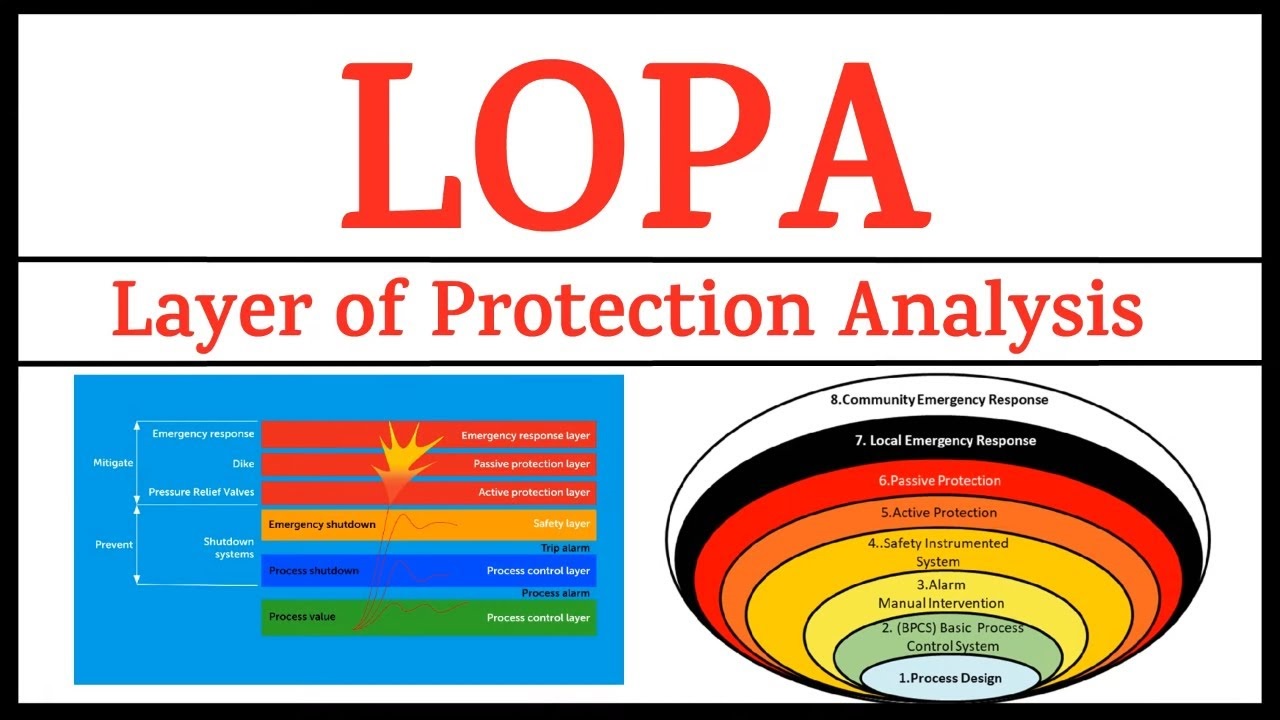Layers of Protection Analysis (LOPA)

Layers of Protection Analysis (LOPA) is a structured and systematic approach for evaluating the effectiveness of safety systems. It is a semi-quantitative risk assessment methodology used primarily in the process industries, such as chemical, petrochemical, and oil and gas sectors. It is an intermediate approach between a qualitative hazard analysis, like Hazard and Operability Study (HAZOP), and a fully quantitative risk analysis, like Quantitative Risk Assessment (QRA).
The primary objective of LOPA is to evaluate the adequacy and effectiveness of independent protection layers (IPLs) in a process facility to minimize the risk associated with identified hazardous scenarios. IPLs can be safety instrumented systems (SIS), pressure relief devices, process alarms, safety interlocks, and other safety measures designed to prevent or mitigate the consequences of an unwanted event.
LOPA involves the following steps:
- Identifying hazardous scenarios: Using qualitative hazard analysis techniques, like HAZOP or What-If Analysis, potential hazardous scenarios are identified.
- Estimating the initiating event frequency: The frequency at which the initiating event for a hazardous scenario may occur is estimated based on historical data, expert judgment, or industry guidelines.
- Identifying and evaluating IPLs: Independent protection layers are identified and assessed for their effectiveness in preventing or mitigating the consequences of the hazardous scenario. Each IPL is assigned a risk reduction factor (RRF) based on its reliability, effectiveness, and independence.
- Calculating the residual risk: The residual risk associated with a hazardous scenario is calculated by multiplying the initiating event frequency by the product of the failure probabilities of all identified IPLs. The residual risk is then compared to the tolerable risk criteria defined by the organization or regulatory authorities.
- Risk management decision-making: If the residual risk is found to be higher than the tolerable risk, additional IPLs or risk reduction measures may be proposed to reduce the risk to an acceptable level.
